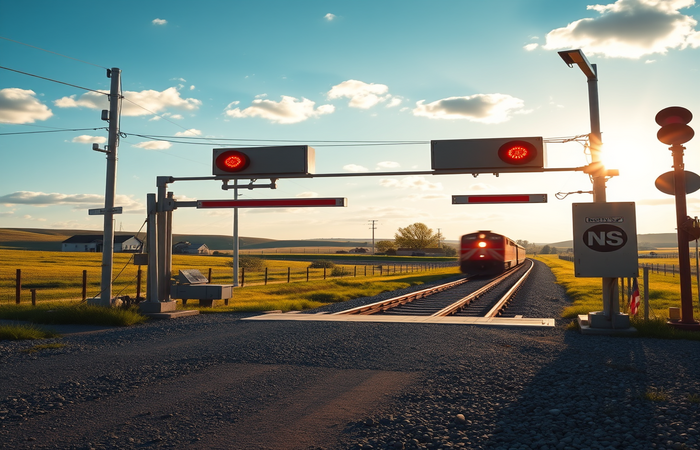SA-Botswana Rail: Trade Boosted by New Lines

Cross-Border Rail Collaboration: Enhancing Trade and Infrastructure between South Africa and Botswana
This article examines the significant collaborative effort undertaken by Transnet Freight Rail (TFR) and Botswana Rail (BR) to improve rail infrastructure and connectivity between South Africa and Botswana. The partnership addresses critical challenges, including infrastructure rehabilitation, new line construction, and combating cable theft, ultimately aiming to boost bilateral trade and regional economic growth. The initiative highlights the importance of cross-border cooperation in enhancing the efficiency and resilience of rail networks, particularly in facilitating access to ports for landlocked nations. The focus will be on the specific projects undertaken, the challenges faced, and the potential long-term impacts on both countries’ economies and trade relationships. This collaboration exemplifies a crucial model for improving regional transportation infrastructure and fostering stronger economic ties.
Infrastructure Rehabilitation: Swartruggens-Mafikeng Rail Line
A key component of the TFR-BR partnership involves the rehabilitation of the 126km rail line connecting Swartruggens in South Africa to Mafikeng. This upgrade is crucial for enabling heavy-haul trains to efficiently transport goods from Botswana to the ports of Richards Bay and Durban. The improvements will involve track upgrades, signaling system enhancements, and potentially rolling stock upgrades to accommodate heavier loads and increase train speeds. This project addresses capacity constraints and improves the overall reliability of this critical freight corridor. The joint funding by the South African and Botswanan governments underscores the importance both nations place on this project, demonstrating their commitment to enhancing regional trade facilitation.
New Rail Line Construction: Mamabula-Lephalale Connection
Beyond rehabilitation, the partnership extends to the construction of a new rail link between Mamabula in Botswana and Lephalale in Limpopo, South Africa. This line will primarily serve the coal export industry, providing a more direct and efficient route to Richards Bay. The construction of this new line requires significant investment in surveying, earthworks, track laying, and signaling systems. It also requires environmental impact assessments and adherence to strict safety regulations. The project promises to significantly reduce transportation costs and transit times, increasing the competitiveness of Botswana’s coal exports and potentially attracting further investment in the region’s mining sector. The success of this project hinges on effective project management, resource allocation, and efficient collaboration between the two rail entities.
Combating Cable Theft and Infrastructure Vandalism
Both TFR and BR are actively collaborating to combat the significant problem of cable theft and infrastructure vandalism. This pervasive issue disrupts rail operations, causing delays, service disruptions, and significant financial losses. The collaborative effort involves implementing enhanced security measures, including improved surveillance technologies, increased security personnel deployment, and potentially community engagement initiatives to raise awareness and deter criminal activity. Addressing this issue requires a multi-faceted approach, involving law enforcement, regulatory bodies, and potentially stricter penalties for those involved in such activities. This collaborative approach demonstrates a shared commitment to protecting critical national infrastructure and ensuring the long-term sustainability of rail operations.
Conclusion
The partnership between Transnet Freight Rail (TFR) and Botswana Rail (BR) represents a significant stride toward improving rail infrastructure and connectivity between South Africa and Botswana. The rehabilitation of the Swartruggens-Mafikeng line and the construction of the new Mamabula-Lephalale link are crucial projects that will enhance trade, improve access to ports for landlocked Botswana, and stimulate economic growth in both countries. The joint efforts to combat cable theft and vandalism highlight the need for proactive measures to protect critical rail infrastructure. The success of these initiatives depends on continued strong collaboration between TFR and BR, effective project management, sufficient funding, and a concerted effort to address the ongoing challenges of infrastructure security. The long-term impact of this collaboration will likely extend beyond improved trade flows, fostering closer economic ties between South Africa and Botswana and promoting regional integration within Southern Africa. The projects’ success will serve as a model for other cross-border rail infrastructure collaborations across the continent, showcasing the transformative potential of strategic partnerships and shared investment in transportation networks.




